
05-02-2025 10:54
Adam PolhorskýHello, I'm looking for descriptions of Apodospora

28-02-2017 09:34
Roberta PiniGood morning,I am looking for the paper by Lundqvi

01-02-2025 10:01
found in the soil, in olive trees and Pistacia ver

30-01-2025 14:54
Karl Soler KinnerbäckHi! Found this one on or next to some Juncus speci

30-01-2025 10:32
victor servranckxHello, I am a biology student from Belgium and on

31-01-2025 08:18
 Blasco Rafael
Blasco Rafael
Hola, que opinan de esta especie, encontrada sobre
En Buxus
Blasco Rafael,
29-01-2025 18:12
 Hola, he encontrado estos pequeños Ascos liquenizados ?? entre Stylodothis puccinoides, en madera de boj, y no se que puede ser. alguna idea de por donde tengo que mirar.
Hola, he encontrado estos pequeños Ascos liquenizados ?? entre Stylodothis puccinoides, en madera de boj, y no se que puede ser. alguna idea de por donde tengo que mirar.Diametro 0,5 y 1 mm
Ascas 50 x 8- 65 x 10 no se si esta bien medida
Ascosporas septadas 45-60 x 2,3-2,8
La base de las ascas y parafisis se tiñen de azul en iki, la parte superior no
Gracias y un saludo
Rafael
Blasco Rafael,
01-02-2025 14:12

Re : En Buxus
Alguna idea ????
Rafael
Rafael
Alain GARDIENNET,
02-02-2025 07:52
Re : En Buxus
Hi Rafael
A quick response : check Bacidia laurocerasi or consorts.
Alain
A quick response : check Bacidia laurocerasi or consorts.
Alain
Blasco Rafael,
02-02-2025 09:47

Re : En Buxus
Gracias Alain
Reviso su propuesta
Rafael
Reviso su propuesta
Rafael
Blasco Rafael,
02-02-2025 10:24

Re : En Buxus
Hola de nuevo Alain
Al final es Bacidia arceutina, la tenia recogida del 2018 sobre el mismo sustrato
Gracias y un saludo
Rafael
Al final es Bacidia arceutina, la tenia recogida del 2018 sobre el mismo sustrato
Gracias y un saludo
Rafael
Alain GARDIENNET,
05-02-2025 12:11
Re : En Buxus
Perfecto !


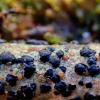
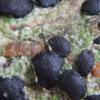
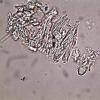
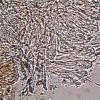
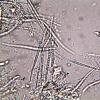
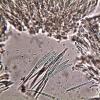
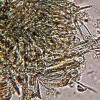
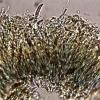
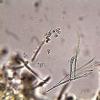
 entre-Stylodothis-puccinoides-Micro-iki-7-0001.jpg
entre-Stylodothis-puccinoides-Micro-iki-7-0001.jpg